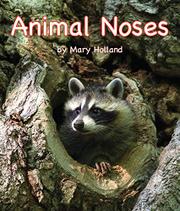
Holland’s latest in the Animal
Anatomy and Adaptations series looks at how animals use their noses.
Noses in the animal kingdom are used
for more than just smelling and breathing: They are also useful for finding
food and mates, avoiding predators, and navigating. A star-nosed mole wiggles
the feelers on its nose to locate earthworms underground; a frog can find its
home by smell; and a snake collects particles on its tongue and uses the
Jacobson’s organ on the roof of its mouth to identify the smells. A wide range
of animals is presented here, not all of them with true noses, which the author
points out. For instance, birds breathe and smell through nostrils just above
their beaks (different species’ senses of smell vary), and insects breathe
through spiricles and smell with antennae. Some facts will amaze: Polar bears
can smell seals through 3 feet of ice, and beavers’ noses close when
underwater. Backmatter includes an explanation of the sense of smell (written
at a significantly higher reading level than the primary text), more fun facts,
and two matching/identify activities. As with Holland’s previous examinations
of animals’ parts, the close-up photos are the main attraction. Vocabulary is
defined in the text, which is mainly written for younger readers, with
questions to get them engaged, shorter sentences, and simple vocabulary (“peeing
and pooping”).
Another solid addition to Holland’s
series. (Nonfiction. 3-9)






Add comment